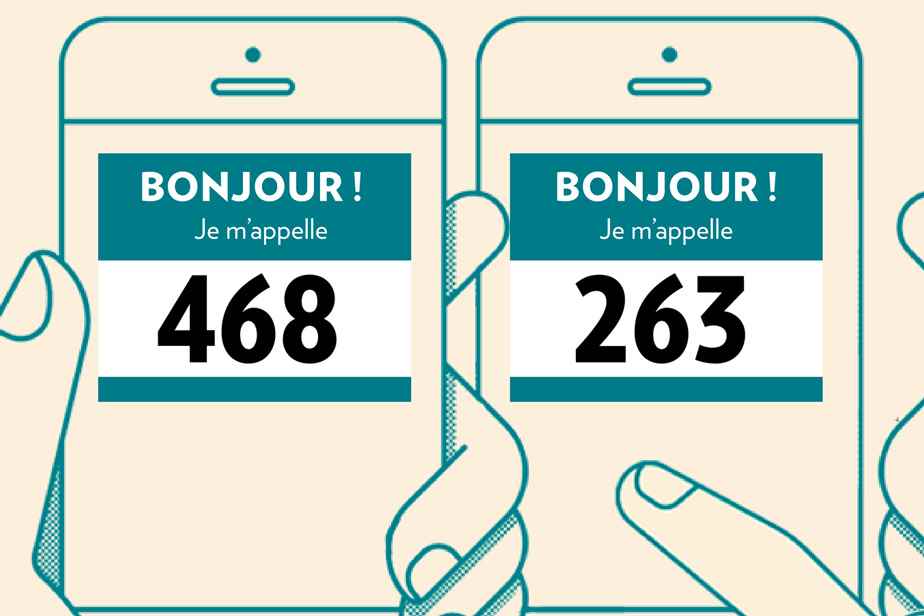Posted at 6:00 a.m.
All around the post
At the end of the 1870s, a few inventors — including Alexander Graham Bell, who presented his invention at the Universal Exhibition in Philadelphia in 1876 — tweaked a technology that would soon become the telephone. In the summer of 1877, demonstrations were held in Quebec. A year later, five “young people” from Montreal, amazed by Bell’s invention, decided to connect their five residences by a network of wires to which a wooden box was connected inside each house. mahogany serving as a transmitter and receiver of the voice. The network ran in the area where UQAM is located today, in the Latin Quarter. The “central post” was housed with a man named Georges Bélanger, at the corner of Berri and Dorchester (today René-Lévesque Boulevard).

IMAGE ARCHIVES THE PRESS
Drawing published in La Presse of January 27, 1912 which illustrates the first telephone network
Hello ? Plateau ? This is La Fontaine!
The network has developed from these central stations scattered throughout the territory. To reach a subscriber through the operator, it was first necessary to identify him by the extension to which he was attached (generally with the first two letters), then by his four-digit number. The Pressfor example, was connected to the Plateau Exchange plant, located at the corner of Saint-Urbain and Ontario streets.

IMAGE ARCHIVES THE PRESS
Advertisement published in The Press in 1956
Bye-bye, operator
In 1925, “automatic telephony” came into operation in Montreal for subscribers housed in the new Lancaster central, rue Saint-Urbain and Ontario. From now on, subscribers will be able to dial the first two letters of the extension and the four digits of their correspondent’s number themselves, without having to go through a telephone operator.

IMAGE ARCHIVES THE PRESS
Article published in The PressJanuary 24, 1925
- 1947: Assignment of area code 514 for the Montreal area
- 1957: Assignment of area code 819 for the west, north and northeast of the Montreal area
From six to seven digits… and more
New, more modern telephone exchanges are being opened to connect more subscribers. As the number of subscribers increases, ways must be found to multiply the telephone numbers. From the 1950s, to comply with new American standards, numbering changed to seven digits: the two letters of the extension, the digit associated with this extension, and the four digits of the subscriber.
In 1960, the residents of Salaberry-de-Valleyfield were the first to use the new direct long distance system without going through a telephone operator. All they have to do is dial the three-digit area code of their correspondent, followed by the two letters and five digits of the telephone number.

IMAGE ARCHIVES THE PRESS
Article published in The Press in 1960
only numbers
From the 1960s, the letters were gradually abandoned to be replaced by seven-digit numbers.

IMAGE ARCHIVES THE PRESS
Article of The Press published in 1961
Commuters betrayed by their call sign
In 1998, a new area code was introduced to identify subscribers who lived off the island of Montreal. The “450” becomes a label that some commuters inherit grumblingly, those who until then went almost unnoticed in the big “514”… In 2010, a new area code (579) will be added to cover this territory.

IMAGE ARCHIVES THE PRESS
Article published in The Press in 1999
Ten digits, and lots of new callsigns
In 2002, a new growth crisis looms on the horizon. “The proliferation of cell phones, fax machines, pagers, internet connections and multiple phone lines [fait] fear a shortage of telephone numbers in the 514 as early as 2004″, reports The Press. Subscribers will now have to dial the area code in addition to the seven-digit number, even for local calls. A new area code is introduced for the Montreal area, 438.

IMAGE ARCHIVES THE PRESS
Advertisement published in The Press in 2006
Tell me what your code is, I’ll tell you…
If it solves (temporarily, of course!) the anticipated crisis of the shortage of numbers, the addition of this new area code revives the “stigmatising” towards those who inherit a new area code. Shunned when it was introduced by new subscribers (especially cell phones) who still preferred to have a 514 number, the 438 ended up making its mark by becoming… an age marker. In a way, 514 is now… an “old” number.
Three new additions to the family
It will therefore only be a decade before a new area code is introduced in the 819 area (873 was added in 2012), a sign of the population growth in this area. The island of Montreal and its suburbs will also each be entitled to a third area code as of October 22.
- 263, in Montreal, in zone 514 and 438
- 354, on the outskirts of Montreal, in the 450 and 579 zones
- 468, from Outaouais to Centre-du-Québec, in zones 819 and 873
This time, the telephone companies cite “economic and population growth, expansion plans by telecommunications service providers in the country and the continued strong growth of new telecommunications tools,” says the Telecommunications Alliance.

